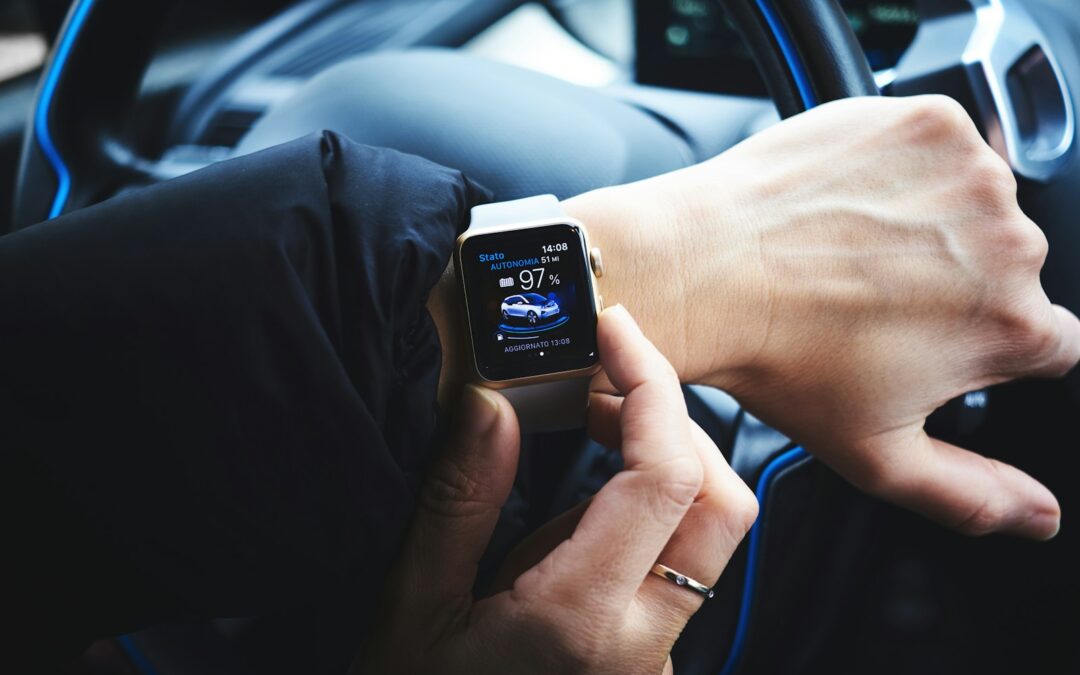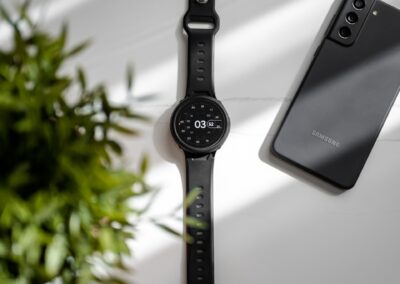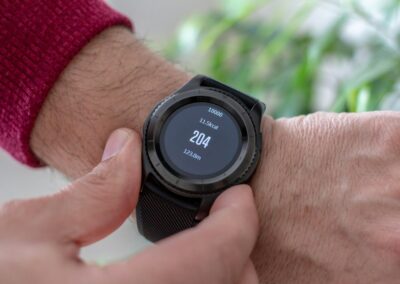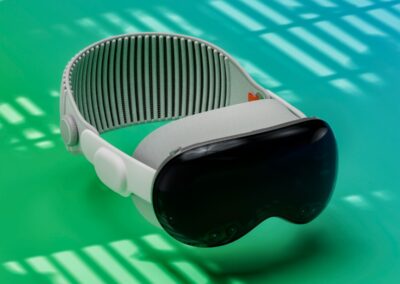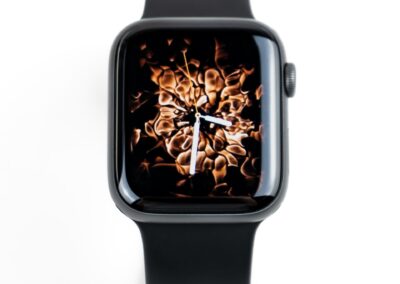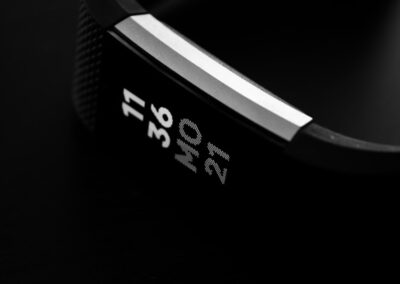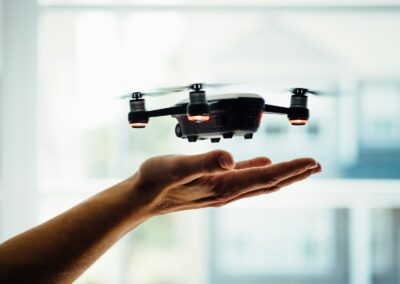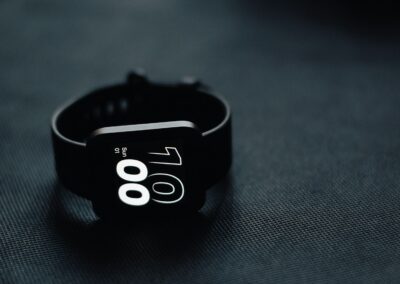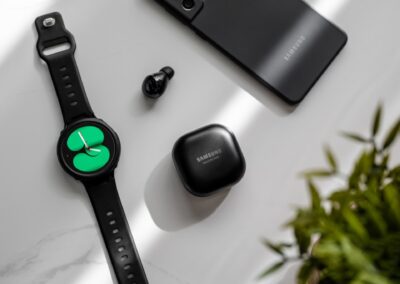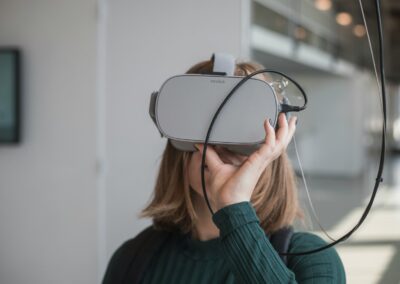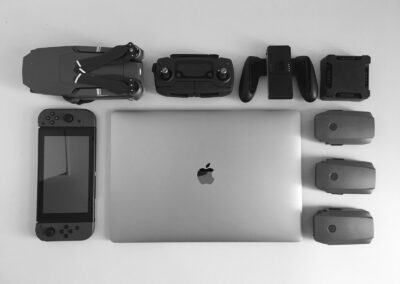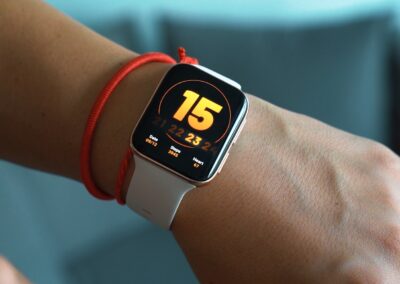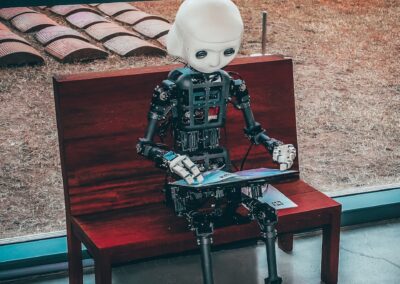The Future of Sensory Enhancement: AI and Machine Learning
Transforming Sensory Wearables with AI
Artificial intelligence (AI) and machine learning (ML) are revolutionizing the development of advanced sensory enhancement wearables, providing users with enhanced experiences and improved quality of life. These technologies are particularly significant in regions like Saudi Arabia, the UAE, Riyadh, and Dubai, where modern technology and innovation are key drivers of economic growth and development.
Sensory enhancement wearables utilize AI and ML to process and analyze data in real-time, delivering immediate feedback and adjustments to the user. For example, AI-powered hearing aids can filter out background noise, enhance speech clarity, and adapt to different sound environments automatically. This capability greatly improves the user experience, making these devices indispensable for individuals with hearing impairments.
In addition to hearing aids, AI and ML are also being integrated into visual enhancement wearables. Smart glasses equipped with AI can recognize and describe objects, read text aloud, and provide navigation assistance for visually impaired users. This technology not only enhances independence but also significantly boosts confidence and safety for users navigating through their daily lives.
Machine Learning Enhances Wearable Functionality
Machine learning plays a crucial role in enhancing the functionality of sensory wearables by enabling continuous learning and adaptation. Through ML algorithms, wearables can learn from the user’s behavior and preferences, resulting in a more personalized and effective experience. In Dubai and Riyadh, where cutting-edge technology is embraced, the integration of ML in wearables is paving the way for innovative solutions in healthcare and beyond.
One of the key benefits of ML in sensory wearables is its ability to predict and preemptively address user needs. For instance, wearable devices for individuals with diabetes can use ML to monitor blood glucose levels continuously and predict potential hypoglycemic events. This proactive approach allows for timely interventions, thereby preventing severe health complications.
Moreover, ML enhances the accuracy and reliability of sensory wearables. By analyzing vast amounts of data, ML algorithms can identify patterns and anomalies that may not be immediately apparent to human observers. This capability is particularly valuable in medical applications, where early detection of issues can lead to more effective treatments and better outcomes for patients.
Case Studies: AI and ML in Action
The practical applications of AI and ML in sensory wearables are numerous and varied. In Saudi Arabia, researchers are developing AI-powered wearables to assist individuals with mobility impairments. These devices use AI to interpret user movements and provide real-time feedback to enhance mobility and prevent falls. The integration of ML further refines these capabilities by learning the user’s specific movement patterns and preferences over time.
In the UAE, AI and ML are being leveraged to create advanced fitness wearables that provide personalized workout recommendations and monitor health metrics. These devices analyze data such as heart rate, activity level, and sleep patterns to offer tailored advice and insights. This personalized approach not only enhances fitness outcomes but also promotes long-term health and well-being.
Additionally, in Dubai, AI-powered sensory wearables are being used in educational settings to support students with learning disabilities. These devices utilize AI to track student engagement and provide real-time adjustments to the learning environment, ensuring that each student receives the support they need to succeed. The continuous learning capabilities of ML further enhance these devices by adapting to each student’s unique learning style and needs.
Future Prospects and Challenges
The Next Generation of Sensory Wearables
The future of sensory enhancement wearables looks promising, with ongoing advancements in AI and ML driving continuous improvement. Researchers and developers are exploring new ways to integrate these technologies into wearables, creating devices that are more intuitive, responsive, and effective. In tech-forward cities like Riyadh and Dubai, the innovation in this field is accelerating, with significant investments in research and development.
One exciting area of development is the integration of biometric sensors with AI and ML. These sensors can monitor a wide range of physiological parameters, such as heart rate, body temperature, and blood pressure, providing comprehensive health insights. AI and ML analyze this data to deliver personalized health recommendations and early warnings of potential health issues.
Furthermore, the combination of AI and ML with other emerging technologies, such as Blockchain and the Internet of Things (IoT), holds great potential for enhancing sensory wearables. Blockchain can ensure the secure and transparent handling of user data, while IoT enables seamless connectivity and data sharing between devices. These integrations will result in wearables that are more secure, efficient, and capable of delivering a holistic user experience.
Addressing Challenges and Ensuring Accessibility
Despite the promising prospects, there are challenges to be addressed in the development and deployment of AI and ML-powered sensory wearables. One significant challenge is ensuring the affordability and accessibility of these advanced devices. Efforts are needed to reduce production costs and develop more affordable models without compromising on functionality and performance.
Another critical challenge is the protection of user data privacy and security. Sensory wearables collect and process vast amounts of personal data, making them a target for cyber threats. Robust measures must be in place to safeguard this data from unauthorized access and ensure compliance with data protection regulations. This is particularly important in regions like Saudi Arabia and the UAE, where data privacy is a growing concern.
Additionally, the successful adoption of AI and ML-powered wearables requires comprehensive training for users and professionals who manage and maintain these devices. This training ensures that users can effectively operate the wearables and that any technical issues are promptly addressed. Collaboration between manufacturers, healthcare providers, and educational institutions is essential to develop and implement effective training programs.
Conclusion: The Impact of AI and ML on Sensory Wearables
The integration of AI and machine learning in sensory enhancement wearables is revolutionizing the way these devices function and adapt to user needs. By enhancing precision, personalization, and user interaction, these technologies are unlocking new possibilities in healthcare, fitness, education, and beyond. In regions such as Saudi Arabia, the UAE, Riyadh, and Dubai, the adoption of advanced sensory wearables is driving significant improvements in quality of life, productivity, and innovation.
As research and development continue to advance, the future of sensory wearables holds immense potential. The ongoing innovation in AI and ML, coupled with the integration of other emerging technologies, will further enhance the capabilities and accessibility of these devices. By addressing the challenges and investing in training and development, stakeholders can ensure that this transformative technology reaches its full potential, benefiting users across various sectors and improving lives worldwide.
#AI #MachineLearning #SensoryWearables #AdaptiveTechnology #SaudiArabia #UAE #Riyadh #Dubai #Blockchain #GenerativeAI #ExecutiveCoaching #BusinessSuccess #LeadershipSkills #ProjectManagement

